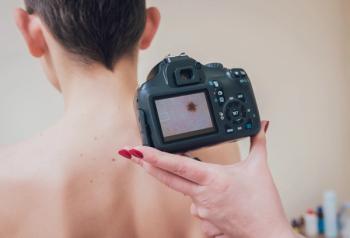
How an Ancient Japanese Art Technique Inspired My Healing Journey From Cancer
A woman whose husband died from cancer explains how she shattered a piece of pottery and glued it back together, to represent the cracks of her life left by her loss and how her husband remains connected to her.
I began this year by reflecting on my relationship with cancer. I credit my husband’s struggle and death in 2015 from bile duct cancer, and those who came before and after him, as integral in the development of who I am and how I function in this ever-changing world of surprises.
I try not to let this disease define who these people were, but it is the one commonality that seems to pop into my head when I remember them. They all lived with cancer. They died from it. It seems that most people have had someone they know experience — or experienced themselves — the complexity of life with cancer.
As part of my study to become a Reiki master, I learned about the ancient Japanese art of Kintsugi which is fixing broken pottery with gold or some other precious metal. It reminds us that something can break and yet, once repaired, is stronger and even more beautiful at the broken places. I used this practice for healing and found it to be helpful during these pandemic times, especially when everyone is aware of the fragility of life.
I wanted to share this practice with CURE® readers because I found it to be a meaningful and unique way to memorialize a loved one. I first started out by finding a piece of pottery (preferably a small bowl or vase) to break — nothing too big because the pieces should be not frustrating to glue back together. I put the pottery bowl in a cloth bag and dropped it from my knee to the cement outside.
Using gloves, I picked up the bag and felt the broken pieces inside. I prayed over them because they represented all that cancer had broken in my life. I then slowly placed them on a mat on my table. I also had pottery glue and some gold arts and crafts powder. I mixed the gold powder into the glue with some of my husband’s ashes. Then I slowly glued the first pieces together. Meticulously, one at a time, I added another piece. There were three large pieces and several tiny pieces. I used putty to seal the cracks that were too small and placed the rest of the shards in another small bag.
For a deeper experience, I then looked at where the breaks occurred and the glued pattern. I had a pattern of three gold lines that connected. I took that to represent myself, my husband and my son. One of the gold lines was separate from the top. I thought that this might symbolize my husband’s departure, and that though he was gone physically, he remained spiritually connected to us.
I like to run my fingers over the piece of pottery and feel the glued ridges, some of which were not perfectly placed. Sometimes I put a candle in the middle or write a note and put it in the bowl. I have the little bag of the shards also in the bowl.
This metaphor for healing was a powerful way to memorialize the person, not the cancer. It also brought some closure and hope for a new year still filled with not just uncertainty, but also with cracks that allow a glimmer of light to shine through.
For more news on cancer updates, research and education, don’t forget to





